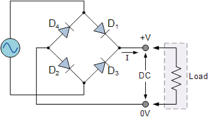 I have the great pleasure of introducing my first Guest Blogger, Zvi Schreiber, who is a really interesting Author. He looks at the teaching and learning of Physics from a very different angle with his brand new book Fizz: Nothing as it seems.
I have the great pleasure of introducing my first Guest Blogger, Zvi Schreiber, who is a really interesting Author. He looks at the teaching and learning of Physics from a very different angle with his brand new book Fizz: Nothing as it seems.

Thanks Alessio for inviting me to Alessio’s Blog, to talk about why I chose to present the history and principles of physics in a non-traditional way: through a fictional novel, named “Fizz”.
Years ago I learned physics in the traditional way – text books, equations, lots of exercises. I loved it. But coming back to physics after years in the world of business, I found that my high school and college education had completely neglected other aspects of physics – and that those other aspects are fascinating to a wider audience who perhaps don’t like equations.
Firstly the physicists. Revisiting physics I learned more about Galileo’s mortal struggle with the Pope who had previously been a personal friend, and his battle against the entrenched two-thousand-year-old ideas of Aristotle. As the first physicist, Galileo showed incredible flare for presenting his ideas to a hostile public and willingness to risk his life.
I learned that Isaac Newton spent more time on alchemy than physics, and that his unpleasant personality may have been amplified by mercury poisoning. Michael Faraday, inventor of the electric motor and generator, was an apprentice bookbinder, the uneducated son of a blacksmith. William Herschel’s sister, overcame dwarfism and family prejudice to become an important astronomer in her own right.
These are just a few of the inspiring stories I had missed in school. The great physicists were real people and I wanted to present them as such.
Secondly many concepts in physics evoke an emotional as well as rational response. The vastness of the universe. The strange idea of action at a distance – introduced by Newton, eliminated by Einstein, reintroduced in quantum mechanics. The idea of an orderly deterministic universe attacked with the successive discoveries of entropy, chaos, and eventually random quantum fluctuations. Some hints at a possible multiverse. A novel allows me to explore Fizz’s response, as a young woman, to these weird revelations about the universe we call home.
There was an important precedent for an edu-novel – Sophie’s World – which helped me and millions of others to learn about philosophy in the 90s. I hope that now Fizz will take her turn alongside Sophie, and help a few people to learn more about our universe and about the bizarre series of people who explored it.
Zvi Schreiber is author of Fizz: Nothing is as it seems a new edu-novel about physics – see http://www.fizz-book.com
Back to me now, Alessio :-), because I would like to give you my impressions about the book. I read it during the summer holidays and it was a really enjoyable and easy read. The book reads very well and it always leaves you with the need to read and learn more at the end of every chapter. I am sure it is partly thanks to Physics, but the way Fizz explores and discovers the laws of Physics is truly fascinating and a great way to learn something about the History of Physics, as well as getting a coherent overview of the laws of Physics which are all connected to each other and not a “modular exam” 🙂
I also like the fact that there are virtually no formulae, not because I don’t like equations, but because it helps the learners to focus on the processes and it reinforces Physics concepts without distracting too much from the narration. Moreover, the situations Zvi built in the novel are memorable and give you that sense of awe and amazement the Scientists mentioned in the novel must have felt in those great moments of discovery!
Another really nice aspect of the book is that the main character is a school age girl who has a genuine passion for how the universe works and she is ready to risk everything to satisfy her thirst for knowledge. This will hopefully encourage and inspire girls to pursue a Physics career!
Nothing happens randomly in Zvi’s book and even the many truly unexpected twists that occur are used as analogies to explain Physics concepts and, believe me, one of these twists you will never guess until you get to those pages 😉
Our Yr12 and 13 will be part of a pilot project this year to test the effectiveness of Fizz’s great adventure in motivating students to learn about Physics and in raising standards. So, watch this space as I will post our learners progress and their impressions on the book.
If you have read, or are reading the book, please leave your impressions as comments to this post!























